Graham Reid | | 3 min read
Martin Winch: My Heart Will Go On (Theme to Titanic)
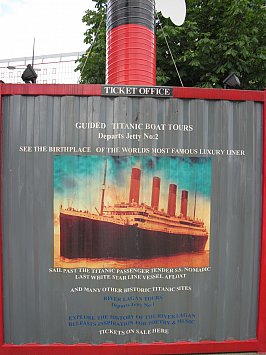
For many decades, out of some kind of misplaced shame, many simply didn’t want to talk about it. In Belfast’s shipyards the name of the vessel once so proudly built there -- but which sank in 1912 to become the world’s most famous shipping disaster -- simply went unspoken.
Even today, a century after the Titanic was being constructed and although there are over 300 Titanic museums around the world, there isn’t one here where the famous White Star Liners -- the Olympic, Titanic and Britannic -- were built.
The most common saying about the Titanic in Belfast is this, passed on by Billy from the front of his cab and later repeated verbatim by Allan as we sailed along the River Lagan: “We built the unsinkable ship. Well, it was unsinkable when it left Belfast, but it had an English captain so it wasn’t our fault.”
Funny yes, but with more than a ring of truth about it. The Titanic’s captain Edward J. Smith had been involved in collisions and incidents on the Olympic before taking over the helm of the Titanic and some said he was jinxed.
He wasn’t of course. As a pub wag on North Street pointed out, the Titanic enjoyed four days of carefree sailing on the Atlantic before that night in April 1912 when it collided with an iceberg.
“Maybe we should blame the Norwegians,” says Allan. “They built the iceberg.”
Although there is currently no Titanic museum in Belfast -- or indeed a maritime museum to acknowledge the 3000 other vessels built here -- the city has long since come to terms with the notoriety of the great unsinkable ship. In fact after those decades of denial by silence, Belfast is celebrating the Titanic and the city’s maritime history with an annual festival in April.
There are also walking tours of the Titanic Dock and through the Edwardian Pump-House (which has a café and visitor’s centre with audio-visual displays and works by leading Irish artists).
The Titanic Times -- a thin broadsheet of anecdotes and photographs -- says in its April editorial, “Belfast doesn’t cower in the shadow of Titanic’s untimely doom. Belfast basks in the glow of her everlasting accomplishment“.
Those four days of carefree sailing, I suppose.
But the way to see the former shipyard area along the River Lagan is by boat and so one afternoon I, along with only half a dozen others, took the Titanic Boat Tour from Donegall Quay for an information-packed and thoroughly enjoyable hour in which nothing happened and there was almost nothing to see.
All that remains of where the hull of the Titanic was launched from in May 1911 is an old crane: the dock in which she was constructed has long since been abandoned; the ship-building is now non-existent; and Queens Island, known as The Titanic Quarter, is the subject of a NZ$7 billion redevelopment to be opened in time of the centennial of the sinking in April 2012.
In the shadow of two massive Harland and Wolff cranes, Samson and Goliath, will be an entertainment precinct, museums, hotels and restaurants, bars . . .
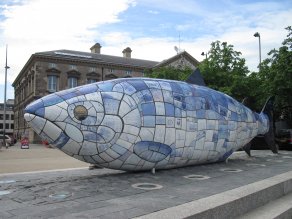
There is also much to learn from Allan who keeps up a non-stop commentary punctuated by jokes and information as we putter down the Lagan: that 95 percent of the photos of the Titanic are actually of the Olympic because that was the first White Star Line vessel, so why bother taking a photo of the second?
He notes that the massive Titanic -- 270 m long -- wouldn’t even be in the top 3000 big ships today, and that the fourth funnel on the ship wasn’t actually functional. It was put there to make it look more powerful.
And then towards the end of the hour, fascinating all of it, we pull up alongside the hull of the Nomadic which was “the Titanic in miniature, used to transport the First Class passengers out to the ship”, says Allan.
It is a sad looking affair, not rusting so much as sorry and abandoned. But, like this whole area, it is currently undergoing a renovation.
A refit will take the Nomadic back to the days when men and women in their finery stepped aboard and were transported to the unsinkable Titanic . . . for four days of carefree sailing.
For other travel stories by Graham Reid, see here for his two award-winning travel books.


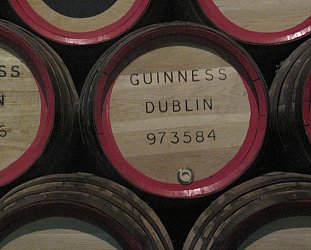
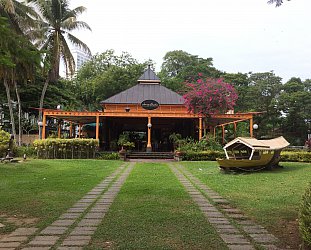
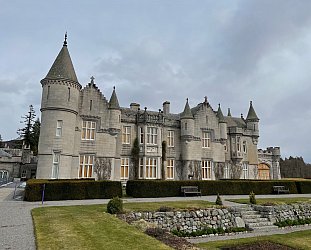


Stuart H - Oct 14, 2010
this 3-DVD set which I borrowed from the local library last week may be of interest
Savehttp://www.bbc.co.uk/northernireland/tv/programmes/ships/index.shtml
Titled 'ships that changed the world' it centres on the H&W shipyard in Belfast.
post a comment